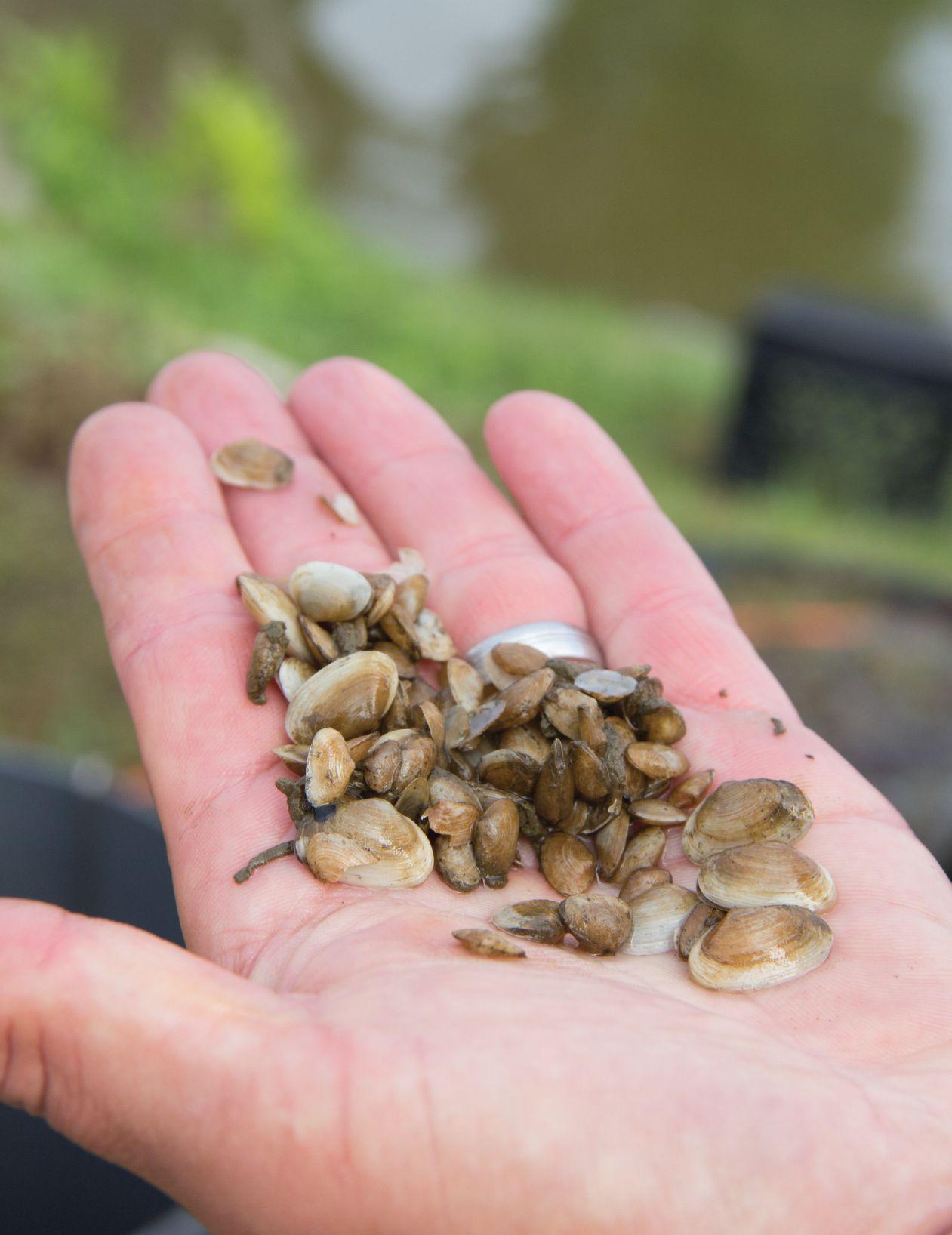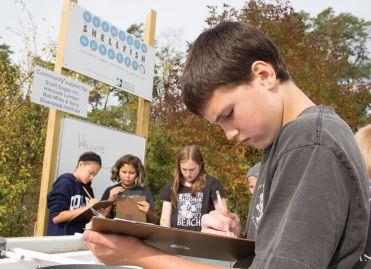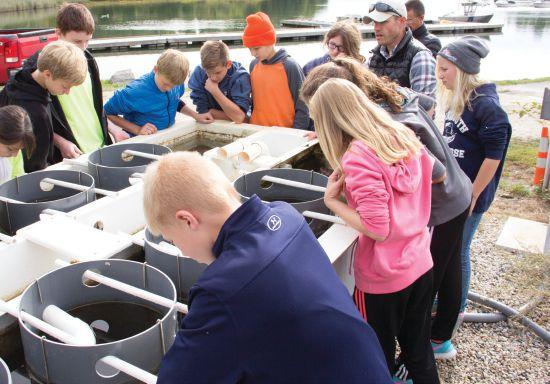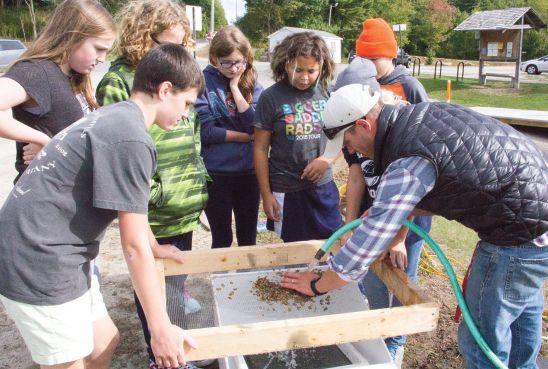
5 minute read
Lessons in the Mudflats
News You Can Use Holding the tiniest of clams in their hands, 7th grade students in Morgan Cuthbert’s science class take their learning to the Royal River Town Landing in Yarmouth. They’re raising baby clams to help boost a declining clam population in a town known for its annual clam festival. Here, the green crab is an invasive species and has threatened the very shellfish this town’s economy depends on. During the Yarmouth Clam Festival, school groups, sports teams and others sell clams, cooked in every way possible, to raise money for their causes. Without clams, community groups suffer which makes the Harrison Middle School students’ study of the clam flats that much more important. The lessons in the mudflats have given students the chance to both study what’s happening to the clams and then figure out how to fix the problem.
“We have a constructivist approach, so basically we let the kids do the science not have the science done to them. Especially in middle school, you can’t hold the kids’ attention without getting them to do something hands on,” said Cuthbert who is also the 2016 Cumberland County Teacher of the Year.

Students study the clams in what’s called an upweller—a nursery where the clams grow safe from predators. Students are responsible for the maintenance of the silos where the clams live and for understanding the process in which the clams feed. It’s in the upweller where the clam growth is sped up—growing the same size in the wild as they would in five years in just two months. With the school project, the clams will grow large enough to be reintroduced back into the water by the students in the spring.
“I like seeing how the clams are growing and how they get cleaned. I’ve learned about how it’s better for the clams to be in the upweller instead of the ocean because of predators. I like being very involved in this process—it helps me learn and it’s more fun than just being in the classroom,” said student Jasper Chappell. Students not only clean the silos where the clams live but they also change out the filter screens, using larger screens for when the clams get bigger to allow the food to pass through. Students also remove any dead clams to ensure the water is healthy for those that are growing.
The hands on approach is something Cuthbert believes deeply in, starting the clam project with a group of students back in 2013. Those same students, even though they’re in high school now, still head out to the upweller to help finish the project they started when they first studied the green crab invasion years ago.


“Mr. Cuthbert’s motivation to keep us involved motivates us to see the clam project through. He could just do his job, which is hard enough already, but he is always pushing us to give us new opportunities because he cares. He inspires us to continue to learn and do good in our community,” said Yarmouth High School Sophomore Duncan Birkbeck.
The project is a joint effort between the school and many community partners, including the Yarmouth Education Foundation which funded the construction of the upweller. “We really pride ourselves on linking the kids to the community and having a better understanding about it. When you do take some of those risks, great things can come from those risks. As teachers we’re learning about the sorting and feeding process in the upweller too. This type of study has never been done before, so as we learn our kids learn too, and in the end our students will be able to tell us if the tidal ecosystem is healthy,” said Cuthbert.
The goal of the project, which has received accolades on the national level, is to grow enough clams to reseed the flats. And, if Cuthbert’s projections are correct, middle and high school students, along with their teacher, will end up being responsible for helping revitalize the clamming community in Yarmouth.
“Everybody we’ve encountered, whether it’s a clammer, or a parent, or someone who helped us construct the upweller, everyone recognizes that it really feels like we are doing something special out here,” said Cuthbert.


STUDENTS SAY....

“Mr. Cuthbert made science a lot more fun because we get to go out into nature.”- Clementine Blaschke, 10th grade
“It's fascinating how many clams there are in the upweller. I like sieving here in the outdoors with the sunlight; it doesn’t feel as confined as the classroom. I think this is a good learning experience for us where we are learning about the environment we live in.”-Steven Densmore, 7th grade

“Clearly, Mr. Cuthbert never stops teaching. He's always willing to get out there and inspire us to ‘get it.’ You can feel the joy that he has when he is learning with us, and you can feel that as well when he teaches.”-Ben CoxFaxon, 10th grade
“It's been really incredible to watch. Before 7th grade I didn't know how much of a problem we had with the clams. We need clams. It was a great experience to learn about something like this in our own backyard.” -Connor Senger, 10th grade

“The project has really grown and Mr. Cuthbert has guided us along the way. It's really cool that we started as 7th graders and we're still doing it. I love being able to get out there on the flats and reach your hands into the mud.”-Grady Welsh, 10th grade










